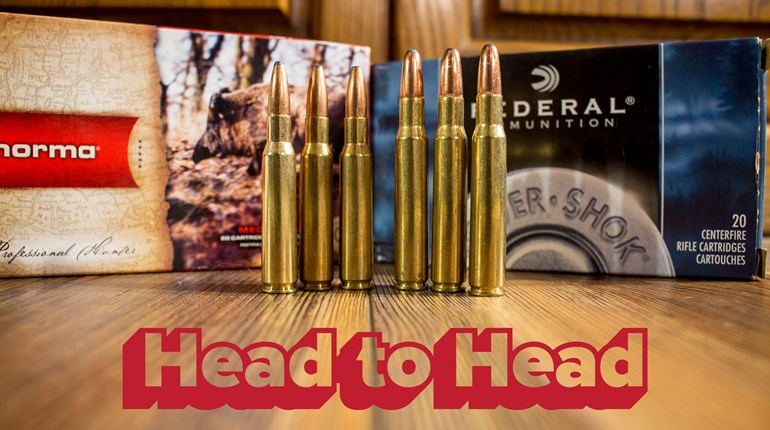
I was crawling around the flatter parts of Colorado behind the inimitable Fred Eichler, in pursuit of a herd of elk which just wouldn’t let us close the gap. The wide open fields of his ranch certainly offered a beautiful vista, but didn’t offer much in the way of cover. We finally set up, me with rifle over a pack and gasping for what little oxygen there was, as Fred began calling out ranges to the bull we wanted. He was weaving in and out of the cows and calves, and I just wasn’t comfortable taking a shot with a window of time so precariously short, but it did prompt an interesting conversation regarding how to compensate for bullet drop.
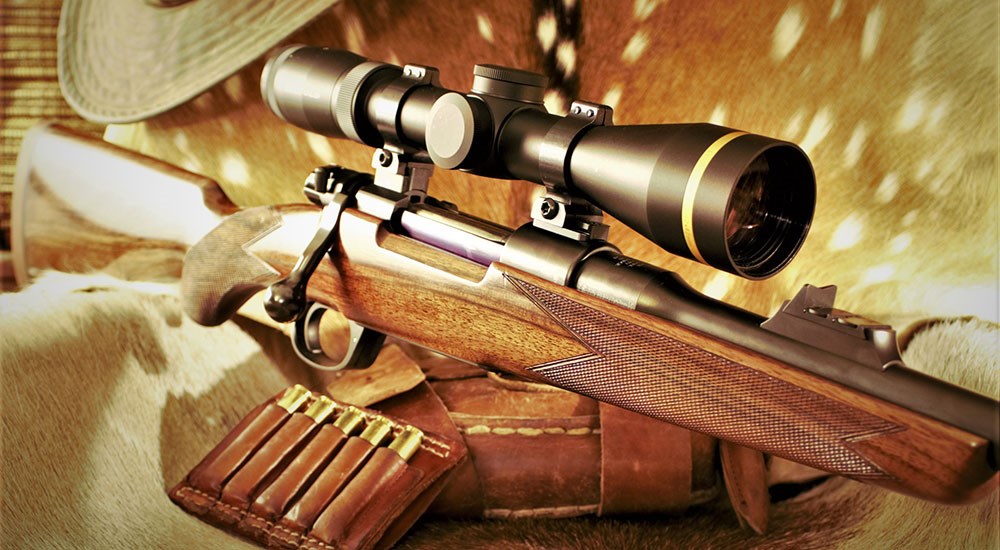 One of the author’s favorite scopes—a Leupold VX-6HD 2-12x42mm—has a simple duplex reticle and no exposed elevation turret; holdover can be a bit tricky outside of 250 yards.
One of the author’s favorite scopes—a Leupold VX-6HD 2-12x42mm—has a simple duplex reticle and no exposed elevation turret; holdover can be a bit tricky outside of 250 yards.
On this particular hunt, I had a Winchester rifle in 6.8 Western, topped with a Leupold VX-6HD 3-18x44mm scope which had an elevation turret specifically compensated for the new 162-grain Copper Impact load. Marked in yardage instead of mils or minutes-of-angle, compensating for trajectory changes was as simple as rotating the dial to match the distance indicated by the rangefinder. We’d proven the system at the range before the hunt began, with consistent hits out to 500 yards, and, with Fred that morning calling distances as fast as he could range them, I was keeping up with the elevation turret. Just three decades prior, this was nearly unheard of—at least in the hunting fields—and drop compensation was achieved either through estimation or a graduated reticle; either means required specific knowledge of your bullet’s trajectory, and how much to adjust for it at varying ranges. The radical differences between the methods prompted the debate regarding which means of adjusting for trajectory makes the most sense for the average hunter.
It seems that younger hunters are more apt to embrace the ‘dial’ method, while those with a bit more snow on the roof are skeptical of the moving parts. Of course this is a generalization, and there are exceptions to every rule, but I know my Dad certainly wants his elevation turret comfortably resting underneath a cap, staying exactly where he put it. He believes in Murphy’s Law, and will make his adjustments via a compensated reticle, or using the good old estimation method. Quite obviously, the ranges at which your shots are taken will dictate the most logical means of handling your trajectory.
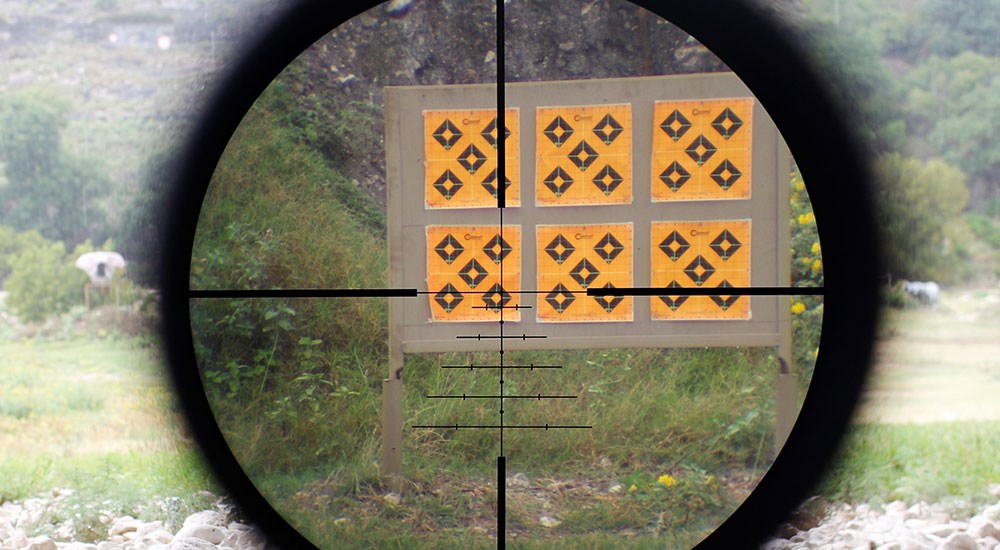 If dialing doesn’t suit your fancy, a compensated reticle can make holdover easier.
If dialing doesn’t suit your fancy, a compensated reticle can make holdover easier.
The average deer hunter in the Northeast will not have to concern themselves with trajectory compensation at all, as the shots in the woods rarely exceed 100 or 150 yards, and the shot is a dead hold. Switch to the mule deer hunters of the west, where the terrain is wide open and shots are much longer, trajectory compensation becomes a daily issue. My first safari—in the semi-Karoo of South Africa—saw some wide-open hunting mixed with thicker patches of bush, and I was happy that I’d spent the time to prepare a drop chart based on real-world data. My .375 H&H wore a Leupold VX-I 3-9x40 with a duplex reticle, and when we completely ran out of cover in pursuit of an eland bull, I got prone against a termite mound, and killed that bull at 400 yards, estimating the holdover. It worked, but I wouldn’t want to do it again.
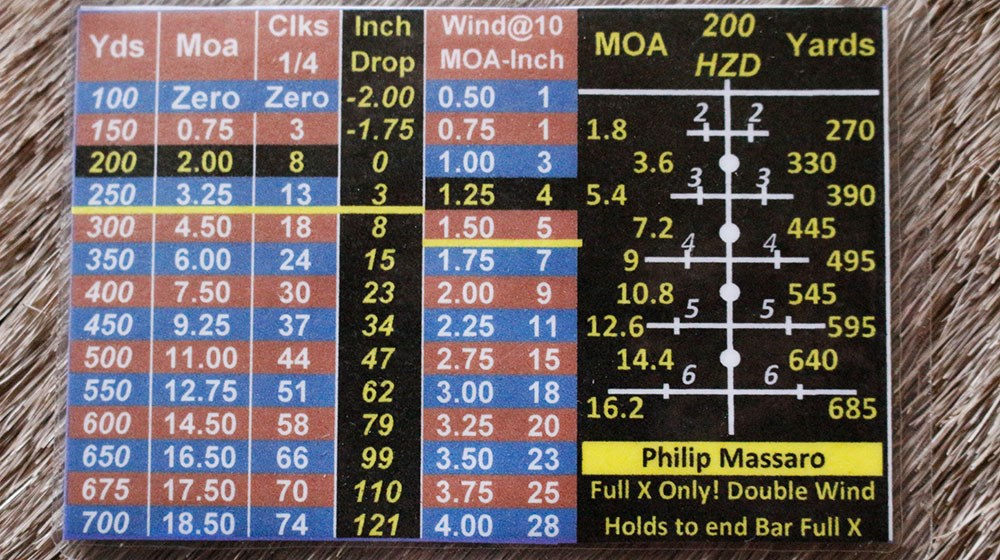 If you plan on using a compensated reticle to the fullest, a detailed data card can become a valuable asset.
If you plan on using a compensated reticle to the fullest, a detailed data card can become a valuable asset.
Looking at the pleasures and pitfalls of dialing for elevation, I find this method to be the most accurate means, but you’ve got to understand the graduation system. If you use just one load for all your hunting, you can have a custom turret made, marked in yardage, for the simplest and most effective means. If you vary your projectile choice/velocity, you may want to have a turret marked in mils or MOA, and carry different drop charts, or memorize the trajectory adjustments. And make sure you return the turret to zero; I’ve seen guys dial for a 400-yard shot, then decline the shot and shortly see an animal at 100 yards, only to shoot well over its back.
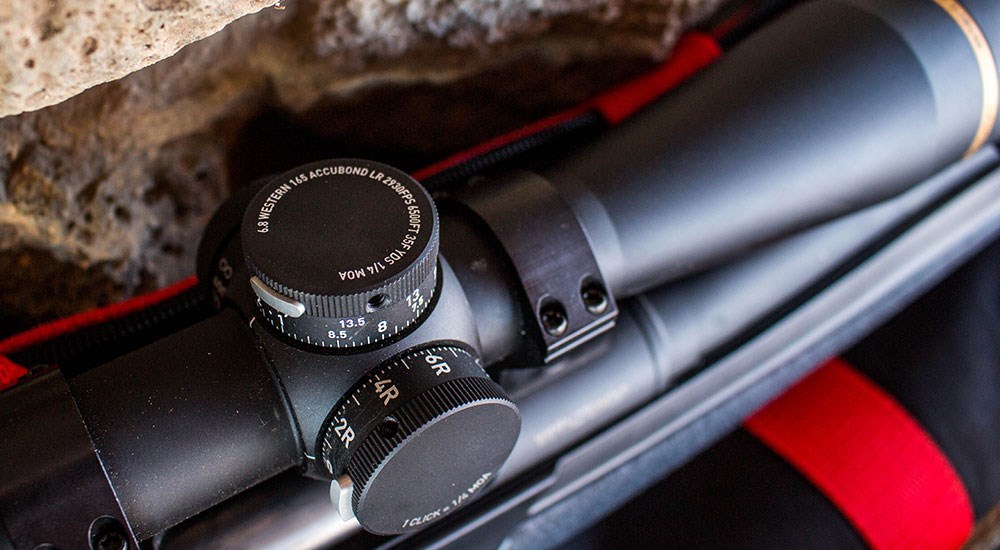 A custom Leupold elevation turret designed specifically for the trajectory of the 6.8 Western’s 165-grain AccuBond load, marked in yardage.
A custom Leupold elevation turret designed specifically for the trajectory of the 6.8 Western’s 165-grain AccuBond load, marked in yardage.
I like the scopes which feature a positive zero-stop—the Leupold ZeroLock is my favorite, as you can instantly check for a zero setting, even if you need reading glasses—as it prevents or at least minimizes the chance of your elevation turret being somewhere you don’t want it. I tend to keep my turret set at 200 yards, as that allows me to handle any quick shot inside that distance, though it might run risk of moving while hunting. That said, I've never had clothing, vegetation or anything else move my turret—yet.
I think that it would be sound advice to say that if you intend to dial your elevation turret for trajectory compensation, you need to practice with it, and practice often. It can be frustrating trying to turn the elevation turret to the proper place under the pressure of the hunt, (especially when trying to shoot an animal walking away, with changing distances). The more familiar you can become with the act of backing your eye slightly off the scope, focusing on the elevation turret, making the adjustment and getting back on the scope with minimal disturbance to the rifle’s position, the better off you’re going to be.
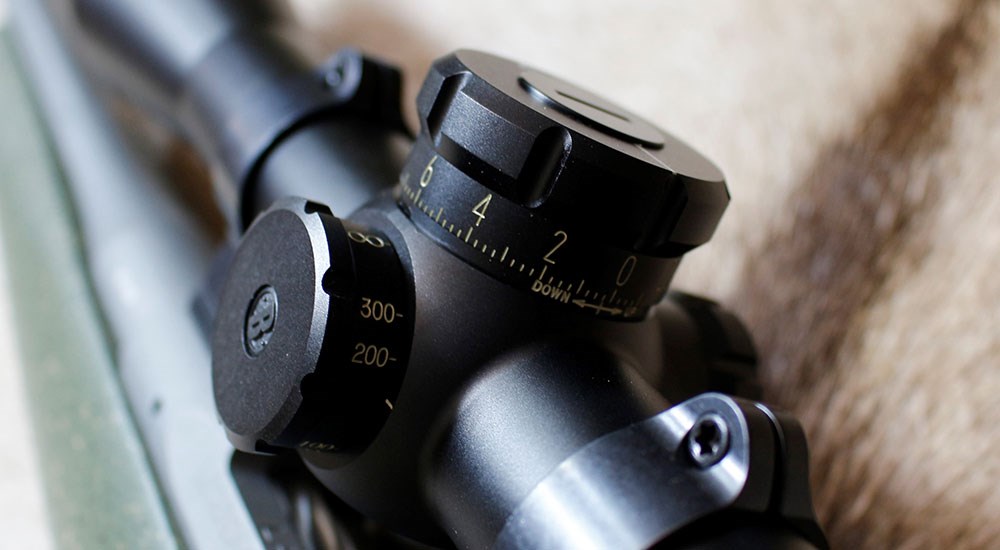 The MOA markings on this Bushnell scope are large and bold, making adjustments easy when you’re behind the rifle.
The MOA markings on this Bushnell scope are large and bold, making adjustments easy when you’re behind the rifle.
If you are the hunter who stays inside of 200 yards, a scope with an elevation turret designed for rapid elevation changes might not be for you. If you are the type of hunter who prefers one favorite big-game rifle for most of your hunting, you may want just such a scope, even if you don’t rely on it often, but may take that rifle to hunt Coues’ deer, caribou or sheep. There is nothing wrong with a scope designed to be dialed on any varmint rifle; I feel that when it comes to precise shot placement, there is no more accurate means of obtaining the proper holdover. Unlike many of the second focal plane compensated reticles—which need to be calibrated at a specific magnification setting—the dial method can be used at any magnification setting, leaving the reticle’s appearance unchanged.
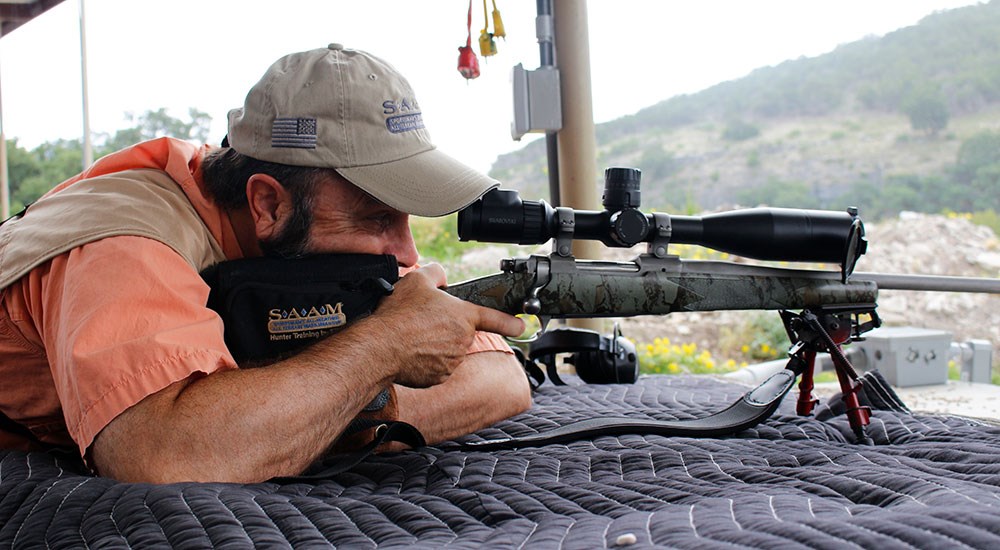 All the technology in the world won’t help you if you don’t become proficient with it; training and practice are paramount.
All the technology in the world won’t help you if you don’t become proficient with it; training and practice are paramount.
Our hunting gear is become more technologically advanced each year, and I’m alright with that if it ends in a more precise, humane kill. If the idea of dialing in the hunting field seems completely alien, maybe it’s time to give it a try, and see if it might not enhance your hunting experience.
Want to read more from Philip Massaro? Check out the following articles:
• Top 5 Predator Cartridges
• Top 5 Dangerous Game Cartridges
• Top 5 All-Around North American Big-Game Cartridges
• An Ode to the .308 Winchester
• Tips for Traveling to Hunt in the COVID-19 Era
• What Hunters Need to Know About Ticks and Tick-Borne Diseases
• Belted vs. Beltless Magnum Cartridges
• Review: Leupold VX-3HD 4.5-14x40mm
• The Effects of Barrel Length on Your Rifle
• The Effects of Bullet Shape at Hunting Ranges
• Best Shooting Rests for Hunters
• 5 Reasons to Learn How to Reload Ammunition
• Why Every Hunter Should Own a Rifle in a Common Caliber
• An Ode to the .375 H&H Magnum
• An Ode to the Winchester Model 1886
• An Ode to the Winchester Model 70
• 6 Ways to Fine-Tune Your Hunting Rifle
• Review: Heym Model 26B Double Rifle .45-70
• 5 Reasons the .300 Win. Mag. Rules the Roost
• Bolt-Action Rifles: Push-Feed vs. Controlled-Round-Feed
• Scope Magnification: How Much is Too Much?
• A Hunter's Guide to Staying Sane During the Coronavirus Outbreak
• Is Walnut Dead? Synthetic vs. Wood Stocks
• Rifles for the Traveling Hunter
• Top 5 Lever-Action Rifle Cartridges
• African Game Meat: What Happens After the Shot?
• Top 5 Underrated Deer Cartridges
• Top 5 Double Rifle Cartridges
• Deer Hunting: Were the Good Old Days Really That Good?
• Essential Gear for the Traveling Hunter
• 4 Reasons to Hate the 6.5 Creedmoor
• 4 Ways to Fine-Tune Your Rifle During the Off Season
• Review: Savage Model 110 AccuFit System
• Top 8 Bullets for African Plains Game
• Review: Tikka T3X Lite
• Top Bear Rifles and Loads
• 3 Rifle Cartridges to Hunt the World
• Why My Cartridge is Better Than Yours
• Top 5 Handgun Hunting Cartridges
• An Ode to the Ruger Model 77
• Top 5 Hunting Cartridges of the 21st Century
• Top 5 Deer Bullets for 2018
• An Ode to the .30-30 Winchester
• 5 Reasons to Book a Spring Bear Hunt
• An Ode to the Ruger Mini Thirty
• Boattail vs. Flat-Base Bullets
• How to Build a Custom Rifle
• Choosing a Cartridge for North America's Big Game
• Top 5 American-Made Hunting Rifles
• How to Choose a Buffalo Rifle
• An Ode to the .223 Remington
• Top 5 Coyote Cartridges
• The Ultimate Long-Range Hunting Cartridge
• The Greatest Whitetail Cartridge Ever Designed
• An Ode to the Browning BAR
• Top 5 Bear Bullets
• Do You Really Need a Magnum Cartridge?
• Why the Ruger No. 1 is Not No. 2
• Top 10 Mythical Game Species
• Top 5 Monometal Soft-Point Bullets
• Top 5 Subsonic .22 Long Rifle Loads
• The Most American Rifle Cartridge
• Tips for the Traveling Hunter
• How to Choose a Gun Safe
• Best Gun Cases for the Traveling Hunter
• An Ode to the .30-06 Springfield
• Top 5 Boutique Bullet Companies
• Top 5 .22 Long Rifle Loads
• 5 Reasons Round-Nose Bullets Are Still Cool
• Top 5 Dangerous Game Loads
• Top 5 Turkey Loads
• 5 Rifle Cartridges That Need to Make a Comeback
• Top 5 Safari Calibers
• 5 New Year's Resolutions for Hunters
• What Your Favorite Rifle Cartridge Says About You
• America's Most Wanted Cartridges
• America's Strangest Game Laws
• What Your Favorite Rifle Cartridge Says About You, Part II
• Top 5 Overrated Rifle Cartridges
• Top 5 Underrated Rifle Cartridges
• 5 Reasons to Handload Your Ammunition
• 5 Cartridges You Might Not Know About
• Top 5 Wildcat Cartridges
• An Ode to the Ruger Mini-14
• Top 5 Hog Loads
• Why .30-30 Winchester Will Never Die













